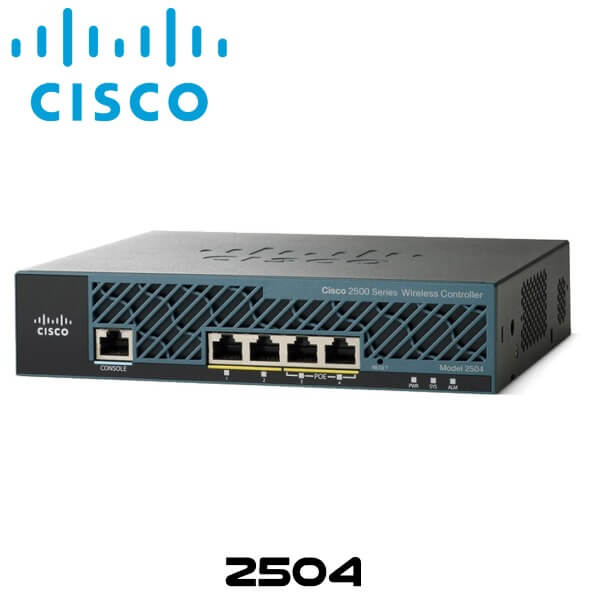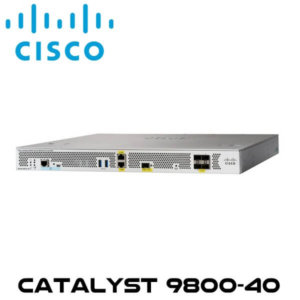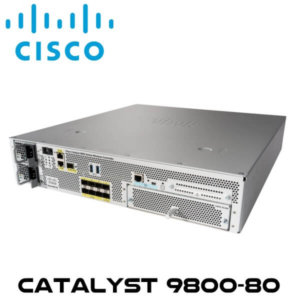Description
Cisco 2504 Wireless Controller Kenya
The Cisco2504 Wireless Controller Kenya enables system wide wireless functions in small to medium-sized enterprises and branch offices. Designed for 802.11n performance, Cisco2504 Wireless Controller Kenya is an entry-level controller that provides real-time communication between Cisco Aironet access points to simplify the deployment and operation of wireless networks. Featuring a component of the Cisco unified wireless network, this controller delivers centralized security policies, wireless intrusion prevention system (wIPS) capabilities, RF management and quality of service (QoS) for voice and video. Delivering 802.11n performance and scalability the 2500 series provides low total cost of ownership and flexibility to scale as network requirements grow.
The Cisco2504 Wireless Controller Kenya supports Cisco Application Visibility and Control (AVC), the technology that includes Cisco’s Network-Based Application Recognition 2 (NBAR-2) engine. N-BAR-2 does deep packet inspection (DPI) to classify applications and tie into quality of service (QoS) to either drop or mark the traffic, thereby prioritizing business-critical applications in the network. Cisco AVC uses NetFlow Version 9 to export the flows to cisco prime infrastructure or a third-party NetFlow Collector. The Cisco 2504 Wireless Controller also supports Bonjour Services Directory, which enables Bonjour (Apple) Services to be advertised and utilized in a separate Layer 3 network. Wireless Policy engine is a wireless profiler and policy feature on this Cisco Wireless Controller enabling profiling of wireless devices and enforcement of policies such as VLAN assignment, QoS, ACL, and time-of-day-based access. An ideal choice for smaller networks and branch offices, this Cisco Wireless Controller Kenya grows with your business. It scales to 75 access points and 1000 client devices. It also offers highly secure wireless guest access. With integrated Cisco CleanAir technology, this controller runs a self-healing, self-optimizing network.
Features
Improved throughput
With an increase to 500 Mbps, the Cisco2504 Wireless Controller allows your data to flow faster.
Flexible licensing
The Cisco2504 Wireless Controller Kenya scales to fit your organization. It supports up to 75 access point licenses, so that as your business gets larger, your network can grow with you.
More client support
More and more mobile devices are entering the workplace, and the Cisco2504 Wireless Controller Kenya is ready for that challenge. It now supports 1000 clients.
Support of industry-standard protocols
Whatever protocols your network is running, Cisco2504 Wireless Controller Kenya can support them. Whether it’s control and provisioning for access points protocols or Datagram Transport Layer Security tunneling, the 2500 can handle it.
Comprehensive End-to-End Security
Cisco2504 Wireless Controller Kenya offers CAPWAP-compliant Datagram Transport Layer Security (DTLS) encryption to help ensure full-line-rate encryption between access points and controllers across remote WAN/LAN links
RF Management
Cisco2504 Wireless Controller Kenya provides both real-time and historical information about RF interference impacting network performance across controllers, via system wide Cisco CleanAir technology integration
Specifications
| Wireless Standards | IEEE 802.11a, 802.11ac, 802.11b, 802.11g, 802.11d, WMM/802.11e, 802.11h, 802.11k, 802.11n, 802.11r, 802.11u, 802.11w, 802.11ac |
| Wired/Switching/Routing | IEEE 802.3 10BASE-T, IEEE 802.3u 100BASE-TX specification, 1000BASE-T, and IEEE 802.1Q VLAN tagging |
| Data Request for Comments (RFCs) |
|
| Security Standards |
|
| Encryption |
|
| Authentication, Authorization, and Accounting (AAA) |
|
| Management |
|
| Management Interfaces |
|
| Interfaces and Indicators |
|
| Physical and Environmental |
|
| Regulatory Compliance | Safety :
EMI and susceptibility (Class B) :
|








